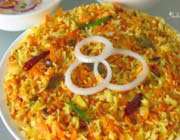
دنیای زبان انگلیسی ( بهروزپور )
لغات و اصطلاح .داستان کوتاه . شعر.جوک .ضرب المثل.اشپزی.رمان. نمایشنامه.متن دوزبانه
دنیای زبان انگلیسی ( بهروزپور )
لغات و اصطلاح .داستان کوتاه . شعر.جوک .ضرب المثل.اشپزی.رمان. نمایشنامه.متن دوزبانهدرباره من
روزانهها
همه- queen.blogfa.com
- وبلاگ زبان انگلیسی دبیرستان سمپاد ملایر
- Join to English
- *´`·.. • • • POEM • • •..·´`*
- rasol academy
- poem
- آموزش زبان انگلیسی
- تدریس و ترجمه کلیه زبانها
- دهکده انگلیسی
- یادداشتهای هماره
- دانشجویان زبان انگلیسی
- شهرزبان
- دبیری زبان دانشگاه فرهنگیان
- English Barobax
- دنیای زبان من: آموزش زبان های خارجه
- وبلاگ آی زبان
- موفقیت من و تو در یادگیری زبان اموزش زبان
- خاطرات خاله نرگس
- دیدنی ها
- English village
- Language Garden
- وبلاگ پرویز ولد خانی
- سایه روشن
- اموزش زبان انگلیسی البیون
- جهان آموزش
- بهترین سایت آموزش انگلیسی رایگان و بزرگترین انجمن ایرانیان علاقه مند به انگلیسی
- خیابان انگلیسی
- آموزش زبان انگلیسی و فرانسه
- کتاب الکترونیکی زبان من /بهروزپور
- بغض چشم
- اموزش زبان انگلیسی دیالوگ
- زبان شناس آینده
- کتابخانه مجازی اموزش زبان لایبر
- love
- ترجمه انگلیسی قران
- An English Translator
- موفقیت من و تو در یادگیری زبان اموزش زبان
- مجموعه کتابهای الکترونیکی دانش و زندگی/رضا فریدون نژاد
- تخصصی کارشناسی ارشد ادبیات فارسی
- وبلاگ سمیرحسین نژاد
- نماز و نیایش
- مترجمی زبان انگلیسی - پیام نور اهواز
- وبلاگ ali rahimian
- در این وبلاک از جون آدمی زاد تا شیر مر غ می توان یافت
- دنیای زبان انگلیسی(رضایی)
- کالج زبان چهار دانگه
- Where a rainbow of our ideas is formed
- engelisi baraye jahane emrooz
- آموزش نرم افزار CATIA
- ترجمه انگلیسی قران
پیوندها
- معما
- شعر
- گرامر
- دیباچه
- fiction
- poetry
- poems
- کتاب نیوز
- دیکشنری
- کتاب سبز
- ازمون تافل
- تاریخ فلسفه
- Food Idioms
- نمایشنامه ها
- sms انگلیسی
- کتابهای صوتی
- تبیان انگلیسی
- Literary Terms
- اصطلاحات ادبی
- اشعار انگلیسی
- ادبیات انگلیسی
- دیکشنری انلاین
- ادبیات انگلیسی
- اموزش انگلیسی
- دنیای ضرب المثل
- تمام اثار شکسپیر
- یادگیری انگلیسی
- دیکشنری تصویری
- دیکشنری تصویری
- business writing
- اشپزی (انگلیسی)
- 180 شعر انگلیسی
- دانلودکتابهای صوتی
- رسم الخط انگلیسی
- آموزش گرامر تصویری
- مکالمه های انگلیسی
- انگلیسی برای کودکان
- سایت سهراب سپهری
- The Quotations Page
- نویسندگان مشهور جهان
- دیکشنری تصویری اینترنتی
- توانایی های ضروری زندگی
- صدهاداستان (متن و صوت)
- نقل قول های زیبای تصویری
- سایتی برای متنهای دو زبانه
- سایت اسلامی به انگلیسی
- شعر انگلیسی برای کودکان
- دانلود رایگان رمانهای خارجی
- راهنمای انگلیسی (تصویری)
- Middle Ages (ارشیو صوتی)
- داستانهای کوتاه برای کودکان
- جدول های انگلیسی با جواب
- یادگیری اسان لغات انگلیسی
- اصطلاح وضرب المثل با تصاویر
- کتابخانه الکترونیکی مای بوک
- تصویری grammarmindmaps
- سایت اصطلاح های انگلیسی
- دانلود رمانها .شعر. داستان کوتاه
- اصطلاح. لغت. ضرب المثل و گرامر
- اصطلاحات مربوط به داستان کوتاه
- دانلود بهترین اثار نویسندگان حارجی
- همه چی در مورد یادگیری انگلیسی
- Popular Contemporary Poetry:شعر
- معما/ چیستان / پازل و ....به انگلیسی
- your best quotes, jokes, and sayings
- Idioms and Sayings About The Human Body
دستهها
- شعر / شعرهای دو زبانه/اهنگ 99
- رمان انگلیسی 32
- مکتبهای ادبی / نقد ادبی 16
- شخصیتهای ادبی 29
- نمایشنامه 15
- اصطلاحات ادبی انگلیسی 11
- ضرب المثل/اصطلاح .مخفف 72
- اس ام اس/ نقل قول /معما/جوک 214
- ایران /مکانهای دیدنی ایران 19
- ارشد زبان/تافل /اموزش گرامر زبان 66
- خواندنیها 75
- اشپزی/تغذیه/سلامتی 69
- دیکشنری ها /مجلات 9
- تصاویر متن دار انگلیسی 318
- داستان /داستان کوتاه دو زبانه 151
- اصطلاح و ضرب المثل (تصویری) 39
- اموزش تصویری لغات , افعال 79
- مذهبی 36
- اموزش نامه نگاری/ مسایل روزمره 7
- تاریخ ادبیات انگلیسی 4
- متن های زیبا فارسی 12
- کتابهای الکترونیکی من 28
جدیدترین یادداشتها
همه- shallکاربرد
- کاربرد صحیح مکالمات انگلیسی
- اصطلاحات معمول انگلیسی :
- life
- think
- ضرب المثل
- شعر
- A boat I will shape:قایقی خواهم ساخت:سهراب سپهری
- داستان کوتاه جان و ساعت ( فارسی و انگلیسی )
- نکات جالب و عجیب اعداد و حروف انگلیسی
- بهترین لحظات زندگی از نگاه چارلی جاپلین
- ضرب المثل/ اصطلاح
- Ah! Sunflower
- life
- h/g
- 50 Ways To Be Happier
- اصطلاح dead meat
- خداوند در زبان انگلیسی
- life..........
- Happy Ramadan
- fact of life
- (:
- داستان کوتاه انگلیسی همراه با ترجمه فارسی (عشق و زمان)
- زیباترین جملات
- 30 ضرب المثل انگلیسی با معنی فارسی
- HAPPY BIRTHDAY IMAM MAHDI
- 15th Shaban
- imagine
بایگانی
- بهمن 1394 2
- تیر 1394 5
- مهر 1393 6
- مرداد 1393 6
- تیر 1393 6
- خرداد 1393 8
- اردیبهشت 1393 9
- فروردین 1393 8
- اسفند 1392 13
- بهمن 1392 5
- دی 1392 6
- آذر 1392 9
- آبان 1392 16
- مهر 1392 23
- شهریور 1392 51
- مرداد 1392 59
- تیر 1392 40
- خرداد 1392 44
- اردیبهشت 1392 47
- فروردین 1392 20
- اسفند 1391 49
- بهمن 1391 65
- دی 1391 41
- آذر 1391 37
- آبان 1391 21
- مهر 1391 18
- شهریور 1391 5
- مرداد 1391 2
- تیر 1391 11
- خرداد 1391 3
- اردیبهشت 1391 6
- فروردین 1391 3
- اسفند 1390 6
- بهمن 1390 8
- دی 1390 8
- آذر 1390 8
- آبان 1390 7
- مهر 1390 11
- شهریور 1390 9
- مرداد 1390 15
- تیر 1390 23
- خرداد 1390 25
- اردیبهشت 1390 54
- فروردین 1390 67
- اسفند 1389 87
- بهمن 1389 257
- دی 1389 148
تقویم
بهمن 1394| ش | ی | د | س | چ | پ | ج |
| 1 | 2 | |||||
| 3 | 4 | 5 | 6 | 7 | 8 | 9 |
| 10 | 11 | 12 | 13 | 14 | 15 | 16 |
| 17 | 18 | 19 | 20 | 21 | 22 | 23 |
| 24 | 25 | 26 | 27 | 28 | 29 | 30 |
جستجو
Types of Point of View
Point of View
An automobile accident occurs. Two drivers are involved. Witnesses include four sidewalk spectators, a policeman, a man with a video camera who happened to be shooting the scene, and the pilot of a helicopter that was flying overhead. Here we have nine different points of view and, most likely, nine different descriptions of the accident.
In short fiction, who tells the story and how it is told are critical issues for an author to decide. The tone and feel of the story, and even its meaning, can change radically depending on who is telling the story.
Remember, someone is always between the reader and the action of the story. That someone is telling the story from his or her own point of view. This angle of vision, the point of view from which the people, events, and details of a story are viewed, is important to consider when reading a story.
What is the point of view in "A Jury of Her Peers?" Is it fixed or does it change? Does it stay the same distance from the events of the story, or does it zoom in and zoom out, like a camera lens? Who is telling the story?
ادامه مطلب ...
ضرب المثل ...
http://dictionary-of-idioms.blogfa.com/cat-1.aspx
ازکاه کوه نساز.
مو را طناب نکن.
Don't put all your eggs in one basket.
روی تمامی موجودی خود ریسک نکن!
Don't put the cart before the horse.
سرنا را از ته نزن.
The early bird catches the warm.
سحر خیز باش تا کامروا باشی.
Every dog has his/its day.
هر کسی دوره ای دارد .
نوبت ما هم می شود.
Every why has wherefore.
هر معلولی علتی دارد.
هر کاری دلیلی دارد.
Funy Status Quotes
- Mark Twain
Some cause happiness wherever they go; others whenever they go.
- Oscar Wilde
- Oscar Wilde
- Bette Midler
Iranian cooking: Haveej Polow
Iranian cooking: Haveej Polow
Ingredients: 4 Servings
Basmati or long-grain rice, 500 grams
Chicken, 750 grams
Carrots, 750 grams
Medium onions, 4
Sugar, 100 grams
Saffron, 1/2 teaspoon
Cooking oil
Salt
Direction:
Wash and peel carrots, then grate them, and fry in oil for a few minutes. Dissolve sugar in a glass of hot water, add to carrots and cook over medium heat for a few minutes until little water is left.
Peel and slice onions and fry in oil until slightly golden. Wash and cut chicken into pieces, and fry in onions on both sides until color changes. Add salt and one glass of hot water, and cook over medium heat for about 20 minutes. Allow chicken to cool down, then remove bones and cut meat into small pieces.
Prepare rice as described in the recipe for polow but after rice is half-cooked and rinsed, mix it with chicken (and juice) and carrots, and continue cooking. When ready, dissolve saffron in 2-3 spoons of hot water in a bowl, then add rice and mix well. Add saffron-rice on top of Haveej polow and serve
.
Source: persianrecipes.net
Why Are Clouds White?
Why Are Clouds White?
The clouds:
A cloud is defined as a mass of little drops of water, also known as droplets, and water crystals (ice) in the atmosphere. There are always thousands of water droplets hanging in the atmosphere but when their amount crosses a certain threshold mark; they become visible as white-colored clouds. They scatter light and help keep the earth remain cool. They acquire the color of their background i.e. the background affects the color of the clouds.
The reason:
So why do some of them look grey or black?
A simple answer is: both the quality and the quantity matter! Let’s see it this way: Black or grey clouds are the thickest among clouds so when light falls on them, in addition to repeated reflections, they also soak up the light and thus appear dark in color.
Moreover, even this is a relative phenomenon. If one looked at the same clouds from an airplane or by some other means from higher altitudes, he would find them white! Because there, he/she would be in the clouds and thus the thickness of clouds that are above him would be lesser.
What other colors are clouds?
During the sunset one can find clouds with a red or an orange ting. The reason is: during sunset/sunrise the sunlight has to travel a longer distance through the atmosphere and the dust particle scattered in the atmosphere scatter red light i.e. the background becomes red thus the clouds appear red. And if there is a lot of red or orange light falling on a cloud with a lot of water droplets, the cloud would appear green to us.
Source: thegeminigeek.com
http://www.tebyan.net/newindex.aspx?pid=211508

